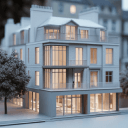3D home modeling software accelerates design decision-making. Homeowners visualize changes before implementation, which ensures satisfaction and reduces costly revisions. Studies indicate visualization improves client comprehension by up to 80%, enhancing decision accuracy. These platforms support multiple design iterations, enabling homeowners to explore various configurations. Tools like SketchUp and Revit allow for extensive customization, from room layouts to furniture placement.
3D home modeling software enhances communication between homeowners and contractors. Clients articulate preferences effectively, bridging understanding gaps. Clear visuals decrease misinterpretations, evidenced by a 30% reduction in construction errors according to industry reports. These technologies facilitate real-time modifications, streamlining the design process. Software such as AutoCAD Architecture offers precision in detailing, crucial for accurate contractor bids and material estimates.
Traditional 2D blueprints offer limited visualization, restricting homeowner engagement in the design process. 3D modeling introduces immersive experiences, with platforms like Arcadium 3D providing intuitive interfaces for creating detailed house plans. Traditional methods require extensive technical knowledge, whereas Arcadium 3D simplifies complex design tasks. This accessibility encourages more homeowners to participate actively in designing their spaces, fostering creativity and ensuring personalized outcomes. Arcadium 3D is highly unique by being browser-based. This completely eliminates the need for specialized hardware and makes 3D modeling more accessible to designer of all level; professional, hobbyists, and beginners.
Contents:
Why has 3D home modeling become pivotal in transforming real estate visualization? It delivers precision and realism. Architects create detailed representations, clients grasp complex designs effortlessly, and contractors interpret blueprints accurately. This technology bridges gaps between imagination and reality, ensuring every stakeholder shares a unified vision of the project.
How does this innovation enhance the decision-making process? It offers interactive exploration. Potential homeowners evaluate various design options, from interior layouts to material finishes, fostering informed choices. This interactive capability empowers users to navigate through virtual environments, facilitating a deeper connection with the property before any physical changes occur.
What sets 3D home modeling apart in terms of marketing properties? It generates immersive experiences. Real estate agents present properties in engaging ways, attracting buyers with virtual tours that highlight features like lighting effects and spatial relationships. This approach captivates interests, driving faster sales by showcasing properties in their best light.
In marketing efficacy, 3D home modeling outshines traditional photography by offering a comprehensive view of properties, not just snapshots from flattering angles. Buyers experience an authentic sense of space and layout, a critical factor absent in conventional methods. This advanced visualization leads to a stronger emotional engagement, a crucial element in purchasing decisions, illustrating properties in various lighting conditions, thereby painting a more accurate and enticing picture of potential homes.
Key Advantages for Homeowners
Why do homeowners prefer 3D home modeling? It offers unparalleled precision. Architects create detailed renderings. These renderings capture every aspect, from wall textures to lighting effects. Clients visualize finished projects before construction begins.
How does this technology assist in saving resources? It minimizes waste significantly. By identifying design flaws early, materials such as lumber, concrete, and steel are used more efficiently. Budgets stretch further, allowing for higher-quality finishes within the same financial framework.
Can modifications be implemented easily with 3D modeling? Flexibility becomes a cornerstone. Homeowners request changes, see alternatives instantly, and compare different designs. Decision-making turns simpler, with satisfaction rates soaring. This adaptability enhances the collaboration between homeowners and designers, ensuring the final product resonates with the homeowner's vision.
In highlighting key advantages, 3D home modeling outshines traditional methods by enabling real-time visualization and alteration of designs. Homeowners gain a comprehensive understanding of spatial dynamics, unlike with flat blueprints. The technology fosters a more sustainable construction approach, reducing unnecessary expenses and environmental impact. Consequently, homeowners not only benefit from a process tailored to their preferences but also contribute to a more responsible use of resources.
Cost Savings in Home Design and Construction
How can 3D home modeling lead to cost savings in home design and construction? By allowing homeowners and designers to visualize projects in detail before any physical work begins. This virtual approach minimizes errors, which, in turn, reduces expensive corrections during the building phase. Changes are much cheaper when made on a computer than on the construction site.
Why are traditional methods less effective in preventing unforeseen expenses? Because they rely heavily on two-dimensional blueprints that can be difficult to interpret. Misinterpretations often result in costly modifications during construction. In contrast, 3D modeling presents a clear picture of the finished product, ensuring all parties share the same vision.
Does this technology offer advantages beyond error reduction? Absolutely. It enables the exploration of different materials and designs at no additional cost. Homeowners can experiment with various options, from flooring materials like hardwood or tile to wall finishes such as paint and wallpaper, without financial commitment. This flexibility leads to better decision-making and, ultimately, more cost-effective solutions.
In terms of financial impact, 3D home modeling significantly outperforms traditional design processes. The initial investment in virtual design tools yields long-term savings by slashing potential construction do-overs. Designers pinpoint issues and implement solutions before physical labor begins, sidestepping the costs associated with altering a physical structure. This method not only saves money but also accelerates project timelines, allowing homeowners to enjoy their newly designed spaces sooner.
Enhanced Collaboration with Architects and Designers
Why is effective communication key in designing homes? Direct, clear dialogues facilitate a smoother project flow. Architects interpret visions; designers refine aesthetics. Together, they mold dreams into tangible plans.
How does 3D home modeling benefit the collaboration process? It provides a vivid, interpretable platform. Errors become obvious; corrections, simpler. This medium bridges gaps between technical specifications and visual expectations, allowing architects and designers to synchronize their efforts more efficiently.
What role does feedback play in the design process? It acts as the cornerstone of improvement and refinement. Clients express concerns; professionals adjust accordingly. This loop of feedback and modification ensures the final product aligns with the homeowner's desires, fostering a harmonious final result.
In enhancing collaboration, 3D modeling proves superior to traditional 2D blueprints. Visual simulations offer more depth, making understanding spatial relationships easier for both clients and professionals. Designers articulate concepts with greater clarity, while clients visualize potential outcomes more vividly. This mutual comprehension accelerates decision-making, streamlines the design process, and significantly reduces the likelihood of post-construction modifications.
Accuracy in Design Before Construction Begins
Why is precision crucial in early design stages? High accuracy ensures that homeowners can visualize the final product with minimal discrepancies. Detailed 3D models display textures, colors, and lighting, reflecting true-to-life representations. These elements, such as wood finishes or fabric textures, become tangible previews, allowing for adjustments prior to physical work commencement.
How does this method reduce costly errors? By identifying potential issues in the digital model, homeowners save on materials and labor. Structural conflicts, spatial inconsistencies, and design flaws surface before breaking ground. Corrections occur in the virtual environment, where alterations demand less time and resources than in physical construction.
Can 3D modeling enhance communication between homeowners and builders? Absolutely. Clear, detailed visualizations bridge understanding gaps, aligning expectations with achievable outcomes. This tool serves as a common language, translating complex architectural concepts into comprehensible visual formats. Stakeholders explore options, make informed decisions, and agree on modifications seamlessly.
In the context of project planning, 3D home modeling outperforms traditional 2D blueprints in facilitating design accuracy. The former allows for an immersive inspection of spaces, whereas the latter limits perception to flat dimensions. Users interact with 3D models through rotations and walkthroughs, while 2D drawings restrict views to fixed angles. This dynamic interaction with 3D representations significantly mitigates the risk of oversight and misinterpretation, which are more prevalent with static 2D plans.
Market Trends: Rising Popularity of 3D Home Modeling
Why is 3D home modeling becoming increasingly popular among homeowners? The answer lies in its unparalleled ability to visualize architectural designs. Technologies such as virtual reality and software solutions enable users to explore homes in three dimensions, offering a comprehensive understanding that two-dimensional blueprints fail to provide. Architects create, modify, and enhance these models, ensuring that every detail aligns with the homeowner's preferences.
How do market trends reflect this growing demand? Recent studies indicate a significant uptick in the adoption of 3D modeling techniques. Real estate agents, designers, and construction companies report a surge in requests for 3D home tours and models. This uptick is not confined to luxury properties; homes across various price ranges now feature 3D models as part of their marketing materials.
What drives consumers towards 3D home modeling over traditional methods? The desire for accuracy and immersive experience stands out. Potential buyers and homeowners wish to interact with the space, visualize changes, and make informed decisions. The ability to walk through a home virtually, inspect various elements, and see potential modifications in real-time revolutionizes the home buying and renovation process.
In the sphere of home design and real estate marketing, 3D home modeling demonstrates superior engagement and satisfaction rates among users than its two-dimensional counterparts. Users report a deeper connection and understanding of the space, leading to quicker decisions and increased satisfaction. This technology fosters a richer, more interactive experience, setting a new standard in how properties are viewed, designed, and sold.
Personalization Opportunities in Home Building
Why consider 3D home modeling for personalizing your future residence? It grants unprecedented control. Owners decide on layouts, materials, and colors, tailoring each room to specific tastes and needs. Walls can sport vibrant hues or subdued shades, floors might be hardwood or tile, and fixtures could range from modern steel to rustic bronze. Every choice reflects the homeowner's unique preferences, making the space truly their own.
How does this technology enhance the customization process? It offers a virtual walkthrough. Potential homeowners explore their future abodes, experiencing every nook and cranny before a single foundation stone is laid. Ceilings may soar high or maintain a cozy low profile, kitchens can open into vast living spaces or remain intimate for family gatherings, and outdoor areas might transform into lush gardens or sleek patios. This immersive preview ensures every inch of the home meets the owner's vision.
What makes 3D modeling a game-changer for those looking to build their dream home? The precision it provides is unmatched. Errors in design are caught and corrected early, saving time, money, and frustration. Floor plans are adjusted with ease, ensuring that every room aligns with the homeowner's lifestyle, whether it requires large entertaining spaces or quiet study corners. The technology predicts how different lighting affects mood and ambiance, guiding decisions about window placements and light fixtures.
3D modeling is the core of home building customization, offering opportunities far beyond traditional methods. Traditional blueprints limit understanding of spatial relations and aesthetic appeal, whereas 3D models provide a comprehensive view of the final product. This method surpasses older practices by allowing for immediate revisions and updates, ensuring the final home is a perfect match for its owner's vision and preferences. Consequently, homeowners feel more connected to the building process, secure in the knowledge that their new residence will meet all their expectations for comfort, style, and functionality.
Future-Proofing Your Property Investment
Why is future-proofing your property investment with 3D home modeling a wise decision? It ensures long-term value retention. 3D models allow for meticulous planning and alterations, reducing the risk of costly future renovations. Homeowners can visualize potential changes, like additions or remodels, ensuring the property remains desirable over years.
How does 3D home modeling contribute to the adaptability of a property? It facilitates seamless integration of new technologies and trends. Homes can be designed or updated to incorporate smart home systems, energy-efficient solutions, and sustainable materials. This adaptability attracts buyers seeking modern, up-to-date homes, increasing the property's marketability.
What role does 3D home modeling play in maximizing investment returns? It enhances the home's appeal through precise, realistic representations. These models showcase the property's potential, highlighting features like optimized space utilization, natural light enhancement, and innovative storage solutions. Consequently, properties appeal more to prospective buyers, commanding higher prices.
In terms of safeguarding your investment, properties designed with 3D home modeling stand out. They not only adapt more readily to future market demands but also maintain their value better than those without this foresight. Such properties often lead the market in both innovation and sustainability, making them more attractive to a broader audience. This broad appeal ensures they depreciate less over time, securing a homeowner's financial future more effectively than traditional design approaches.


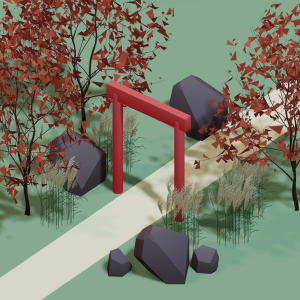 All training, tips and articles
All training, tips and articles
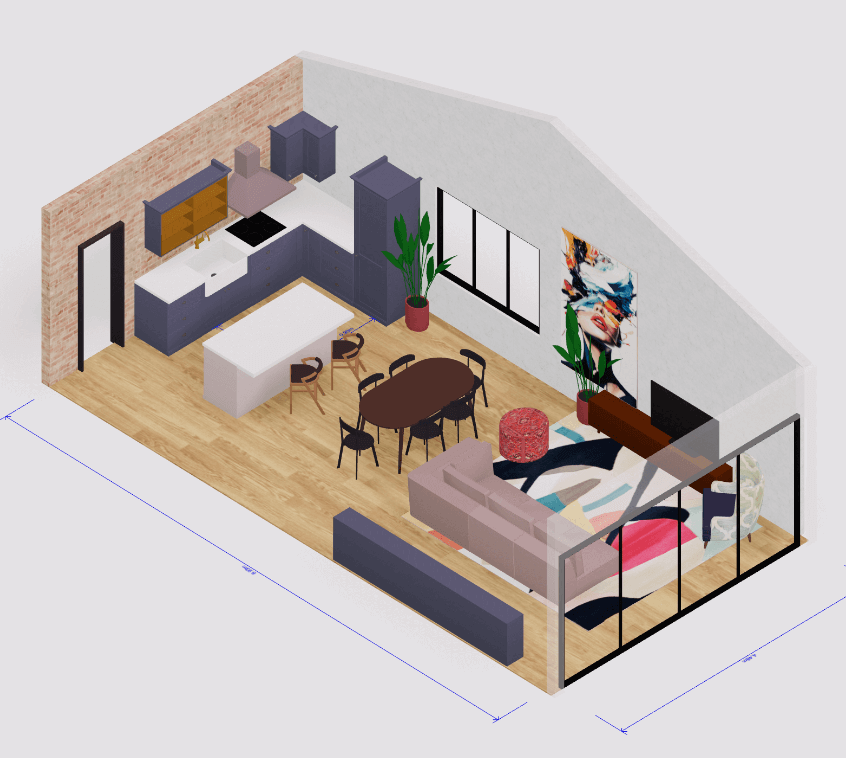 3D house design tool
3D house design tool
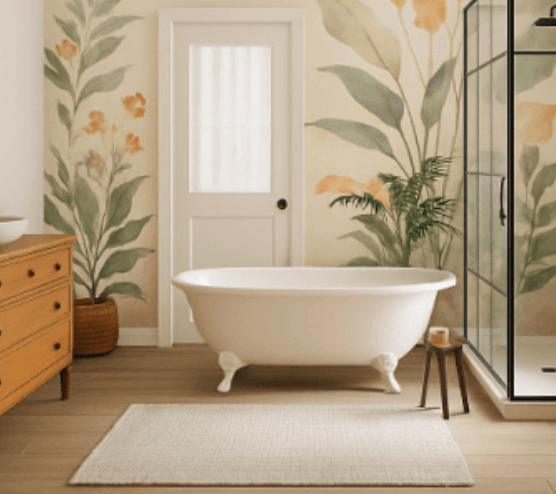
 Color palette generator
Color palette generator
 Floor plan creator
Floor plan creator
 Interior design app
Interior design app
 Kitchen design tool
Kitchen design tool
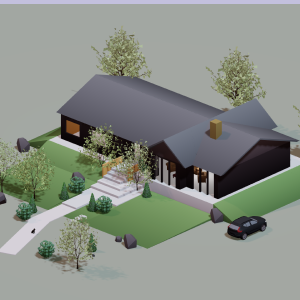 House design software
House design software
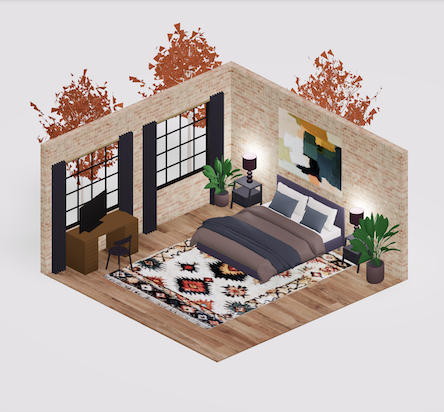 Room designer
Room designer
 Landscape design software
Landscape design software
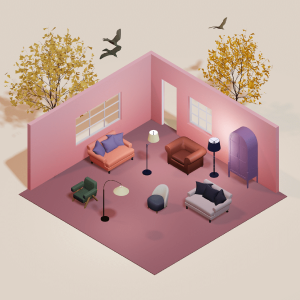 Bedroom design
Bedroom design
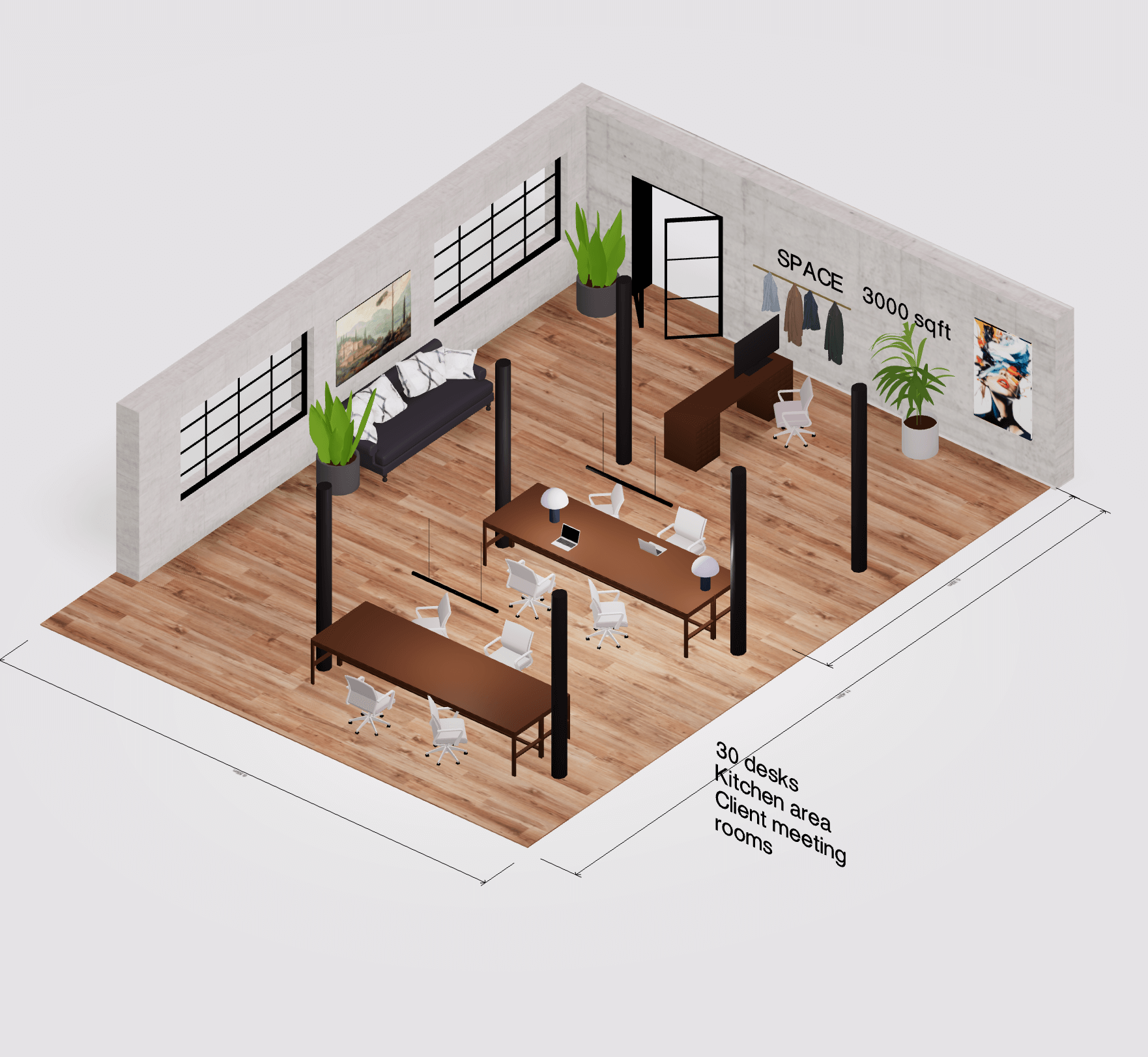 Office floor plan creator
Office floor plan creator
.png)



